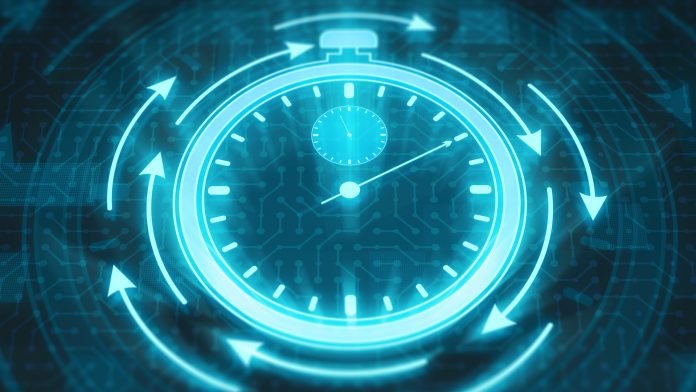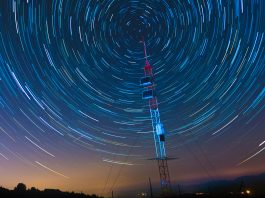Australian physicists are currently using anti-neutrinos and atomic clocks to understand time dilation and the nature of time itself.
Researchers from Griffith University, Australia, are conducting an experiment at Australia’s Nuclear Science and Technology Organisation (ANSTO) to test a revolutionary physics theory that time reversal symmetry-breaking by neutrinos might cause a time dilation at the quantum scale.
After receiving backing from the National Measurement Institute (NMI), Adjunct Professor Erik Streed used anti-neutrinos and a collection of atomic clocks to carry out a preliminary experiment and test the validity of a new quantum theory of time being developed by his Griffith University colleague Professor Joan Vaccaro.
Vaccaro, an accomplished theoretical physicist, has developed a fundamental theory that puts time and space on the same footing. The theory suggests that the dynamics we observe everywhere as changes occurring over time are not fundamental parts of nature but emerge phenomenologically due to time symmetry violations. If this new theory is correct, it will overturn the way we think about time and space, as well as fundamental laws, such as the conservation of mass.
Testing this theory
In a 2016 paper published in the journal Proceedings of the Royal Society A, Vaccaro challenged the long-held presumption that time evolution – the incessant unfolding of the universe over time – is an elemental part of nature. In the paper, entitled “Quantum asymmetry between time and space,” she suggests there may be a deeper origin due to a difference between the two directions of time: to the future and to the past.
The theory predicts that the time accumulated by a clock depends on the amount of time violation in its local region. A clock placed near the reactor core is predicted to lose synchronicity with the more distant clock. This means that one of the test clocks near the reactor, may show some time dilation, or difference in elapsed time, when compared with a clock a short distance away.
Vaccaro proposed that an experiment could be undertaken with a nuclear reactor to test the theory. A local source of time violation at the quantum scale could contribute to the net amount of time violation and, thereby, modify dynamics locally.
Using the Open-Pool Australian Lightwater (OPAL) reactor, the team will produce a vast stream of anti-neutrinos that move unscathed through matter. The experiment will test Vaccaro’s theory because anti-neutrinos produced by the reactor represent a time violation field that has an inverse square law fall-off with distance from the core.
Streed said: “My colleague’s calculations suggest that neutrinos may have a greater impact on time than we realise. It would be very surprising indeed if neutrinos were interacting with matter on the basis of time rather than just the weak nuclear force.”

The role of atomic clocks in testing neutrinos
Following a successful proposal submission to the Australian Centre for Neutron Scattering, the investigators travelled to ANSTO to install two timing stations with atomic clocks in proximity to the reactor, where they will collect data for six months. Atomic clocks are used in tests of fundamental physics to detect tiny effects at the quantum scale because of their exceptional accuracy and precision.
Dr. Michael Wouters, who leads Standards for Time and Frequency at the National Measurement Institute in Sydney, is collaborating on the experiment. NMI provided the atomic clocks and developed the measurement systems that are essential for the experiment.
The research team used commercially available high-precision clocks in this initial experiment, however, clocks with much better performance would be used in an improved version of the experiment. The researchers will place one timing station about five metres from the reactor, while the reference station is 10 metres from the reactor. Each station comprises a caesium primary clock, three secondary clocks, and the measurement systems used to compare the clocks to less than a billionth of a second.
Streed’s research group believes that it is important for the clocks to be subject to neutrinos in an environment under exactly the same physical conditions because they are not completely immune to changes, such as the ambient temperature.
Wouters explained that the experiment does not involve single measurements but averaging for an optimal time for each particular type of clock to get the best possible measurement. The fact that the reactor is shut down for maintenance periodically provides an advantage, in that, it allows for a predictable control of the experiment when the two sets of clocks should be running at the same rate. This would be a more convincing experimental demonstration of the proposed time dilation effect.
Result or limit from the reactor experiment will be compared with calculations from uncertainties in the observed motion of planets and other objects orbiting the Sun, which are predicted to be similarly affected by the solar neutrino flux. Wouters explained: “Irrespective of the outcome, part of the experiment is about getting experience in the environment we have to work in, which is not a controlled environment like our labs.
“The operating conditions will help us identify and characterise potentially relevant sources of error from a range of environmental conditions, helping us to design an improved version of the experiment.”
Streed believes that if the experiment is successful, the team will be able to quantitively evaluate the quantum effect on time. He added: “And if the effect is occurring at the reactor level, we would need to validate it at other nuclear reactors and then look for the effect in other places, like planetary orbital data. From a scientific perspective, it is incredibly high risk because of the unknowns.”









